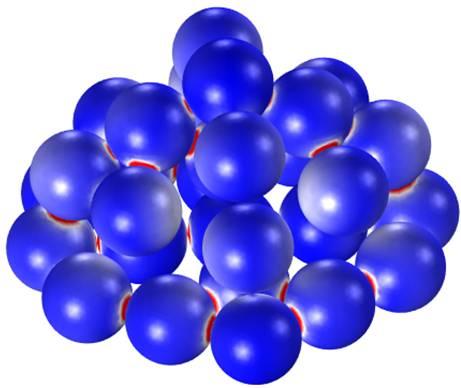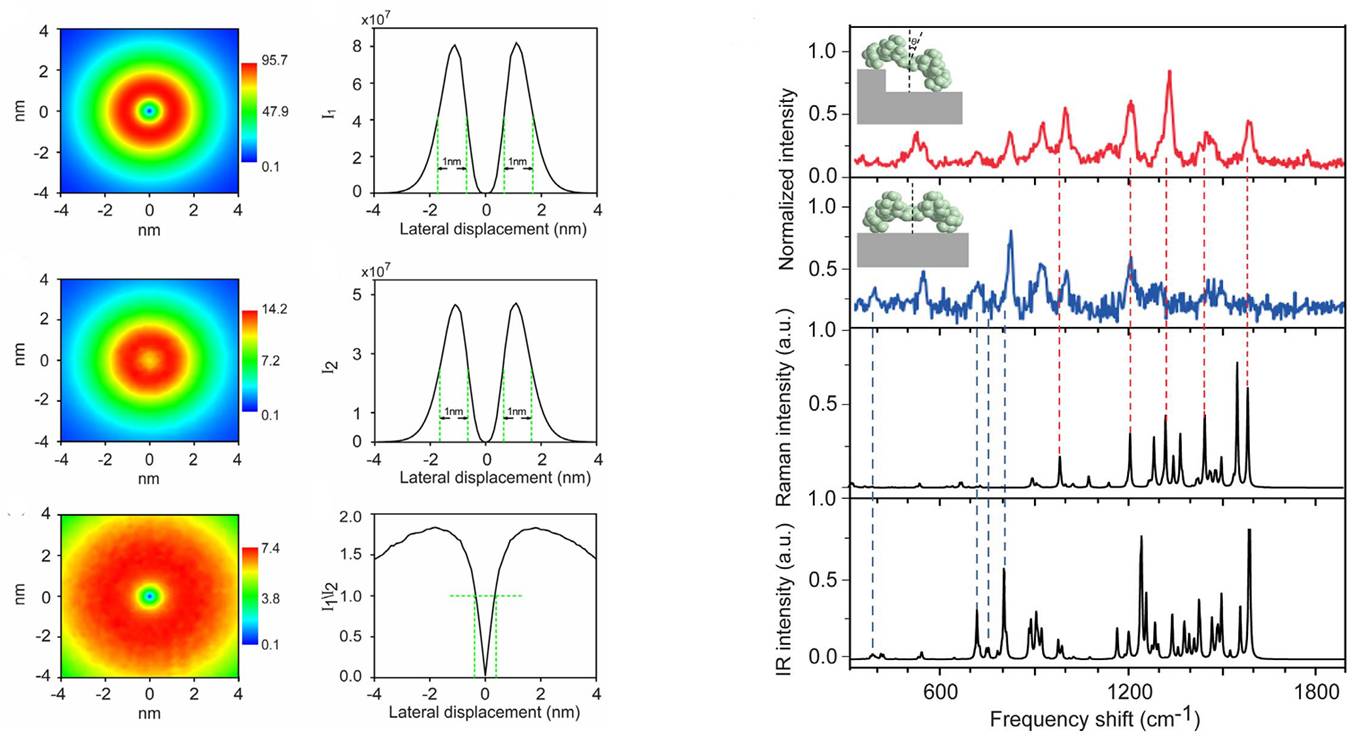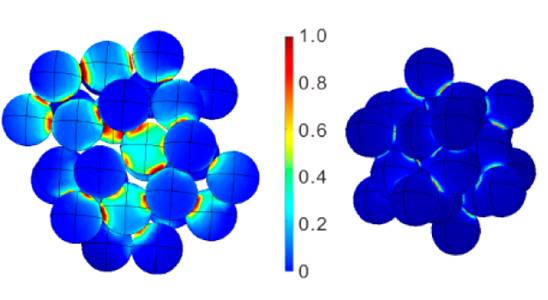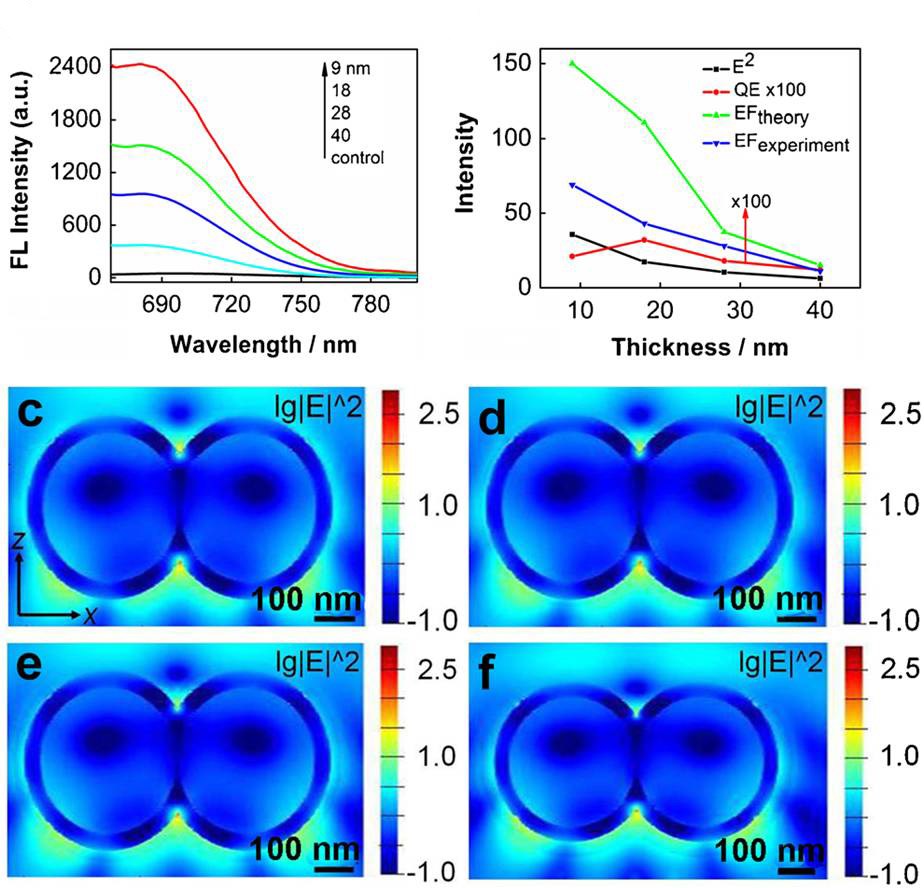

学位:博士学位
学历:博士研究生毕业
职称:副教授
单位:曲阜师范大学物理工程学院
孟令雁,男,1986年10月生,山东德州人,理学博士,毕业于厦门大学物理系,现曲阜师范大学物理工程学院副教授;主要从事表面等离激元光学与光谱方面的研究工作;目前主持国家自然科学基金青年基金1项,参与国家自然科学基金面上项目4项;主持山东省自然科学基金面上项目1项,参与山东省自然科学基金2项;在APL, Nanophotonics,Photonics Research,Optics Express等权威期刊发表学术论文30余篇。
1. Plasmon-enhanced Raman spectroscopy (PERS)
1) Tip-enhanced Raman spectroscoy (TERS)
TERS is widely used for the nanoscale surface analysis, benefited from the single molecule sensitivity and the ultra-high spatial resolution that breaks the diffraction limit. TERS combines Scanning Probe Microscopy (SPM) with Raman Spectroscopy. In TERS the near-field electromagnetic coupling of diffraction limited incident light to a metal or metalized SPM tip leads to a huge localized electromagnetic field enhancement in the narrow nanogap between tip and substrate. The localized field enhancement can largely enhance the Raman scattering intensity of molecules in the vicinity of the tip.
Studying the physical mechanism of sub-nanometer spatial resolution of TERS. The calculations suggest that the ultra-high spatial resolution of TERS can be partially attributed to the electric field gradient effect owning to its tighter spatial confinement and sensitivity to the infrared (IR)-active of molecules. Particularly, in the case of TERS of flat-lying H2TBPP molecules, the electric field gradient enhancement is the dominating factor for the high spatial resolution, which qualitatively coincides with previous experimental report.

Studying the enhancement mechanism of TERS. The AFM tip-based TERS was designed theoretically and demonstrated experimentally. By optimizing the tip, excitation laser, and the substrate, the TERS enhancement factor can be tuned to as high as 9 orders of magnitude, and the spatial resolution could be down to 5 nm. Preliminary experimental results for AFM tips coated with gold layer of different thicknesses reveal that the maximum enhancement can be achieved when the thickness is about 60-80 nm, which is in good agreement with the theoretical prediction.

2) Surface-enhanced Raman spectroscoy (SERS)
SERS is an ultra-high sensitive surface analytical technique, and can greatly enhance Raman scattering of molecules. The enhancement factor can be as high as12-14 orders of magnitudes that means SERS technique can be used for sensitive and selective molecular identification. SERS enhancement results from the dominating electromagnetic enhancement and the chemical enhancement. Preparation of SERS active substrate with high stability、single molecule research、quantitative detection and the study of unified enhancement mechanism are scientific frontiers in the field of SERS.
Three dimensional (3D) SERS hotspot matrix. Three-dimensional (3D) hotspot matrix can hold hotspots between every two adjacent particles in 3D space. The geometry with minimal polydispersity of particle size and maximal uniformity of interparticle distance can result in a large number of hotspots in 3D space that is in favor of quantitative detection of SERS.

2. Plasmon-enhanced fluorescence (PEF)
1) Tip-enhanced fluorescence (TEF)
Precision in-situ Measurements of Tip-enhanced Raman and Fluorescence Spectroscopy. A scanning tunneling microscope (STM) is proposed to precisely control the tip-film distance, and thus in-situ measurement of TERS and TEF can be realized utilizing the specific surface plasmon resonance (SPR) properties of the tip-film system. The calculations show that the optimized tip-film distance of 2 nm suggests a possibility of efficient acquisition of TERS and TEF in-situ. The calculated spatial resolution of TERS and spectral resolution of TEF can be down to 6.5 nm and 10 nm, respectively. The theoretical results may find promising application in developing multiple functional nano-spectroscopy through which Raman and fluorescence can be measured in-situ at the nanoscale level.

2) Surface-enhanced fluorescence (SEF)
SEF relies on the electromagnetic field associated with plasmon to enable fluorescence enhancement. Plasmon is light-induced collective oscillation of free electrons in a metal. As a result of surface plasmon resonance (SPR), giant electromagnetic field is created on the surface of the plasmonic metal, which is essential for a series of applications such as surface enhanced Raman scattering , plasmonic sensing and fluorescence enhancement.

3. Plasmon-enhanced nonlinear spectroscopy (PENS)
Plasmon-enhanced second-harmonic generation nanorulers. The nonlinear nanorulers were designed that are capable of accomplishing approximately 1 nm resolutions by utilizing the mechanism of plasmon-enhanced second-harmonic generation (PESHG). The PESHG nanoruler can be potentially developed as an ultrasensitive optical method for measuringnanoscale distances with higher spectral accuracies and signal-to-noise ratios.

4. Plasmon-coupled directional emission of PES (PERS、PEFS and PENS)
Directional surface plasmon-coupled emission of tilted-tip enhanced spectroscopy. Understanding the spatial radiation pattern in tip-enhanced spectroscopy (TES) is crucial for plasmonenhanced spectroscopy, chemical analysis and biochemical sensing. Although the TES technique has many excellent advantages, there is still room for improvement in terms of detection sensitivity. In this paper, we theoretically demonstrate the tip-tilted TES configuration featuring high directivity by using side illumination-collection condition. Taking full advantage of the characteristic of high directional emission ascribed to the far-field interference between localized surface plasmon resonance (LSPR) and surface plasmon polariton (SPP) modes, the collection efficiency of TES signals can be largely improved, greatly boosting the detection sensitivity of TES technology. Our theoretical results not only provide a deep understanding of the underlying physical mechanism of the directional surface plasmon-coupled emission of TES, but also serves as a promising guide for the rational construction of a highly efficient TES platform at the single molecular level.
